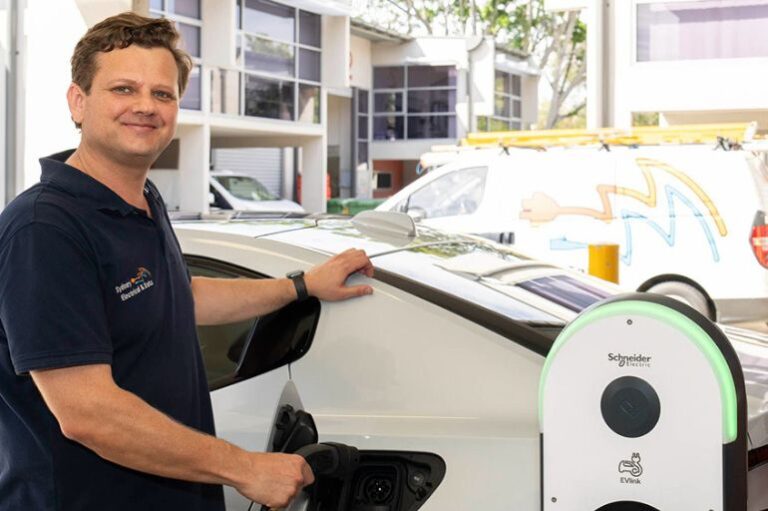I caught up with Andrew Hardingham of Sydney Electrical and Data in August, to chat about the various fleet transition projects that they’ve been a part of, including some which are turning heads and winning awards.
Sydney Electrical and Data have been working with several progressive councils and large entities with transitioning fleets, and Andrew had many insights to offer for Fleet Managers undertaking this work.
With existing client relationships and years of experience installing and maintaining electrical, lighting, solar and data cabling, they are a natural first contact for clients who are transitioning.
“We’re often brought in for a feasibility assessment,” said Andrew. “We know their systems already, we know their system capability. Often we’ve upgraded their switchboards in previous years and have installed power meters on all of those so data is readily available.”
As an EV Charging installation relies on communications for charger management and load management, the data cabling expertise of Sydney Electrical and Data is also very relevant to the specification and installation of charging hardware.
“There are a lot of misconceptions about Load Management Systems (LMS), in terms of how it works and how many cars you can charge with the existing available supply” said Andrew, acknowledging the complexity of load management, and how much of a diversion LMS is from regular fleet responsibilities.
“People think they’re going to need a massive charger, and maybe you do for buses or garbage trucks that need a quick turnaround, but with a fleet thats parked over night you can do a lot with a LMS and a limited energy supply.”
Looking at the fleet and how they are used is a fundamental part of planning for charging, said Andrew, noting that a council rarely has a vehicle doing 500kms in a day, and is much more likely to be traveling less that 100kms daily. So that vehicle is not going to be charging at full load current every time it is plugged in.
“I see a lot of concern over fire safety as well, but I think that the risk will diminish over time, as the battery technology is advancing to be safer year after year. Right now NSW has an issue of basement EV charging being considered a Special Hazard, but that may change as batteries improve and we’ll see fire risks will melt away. In the meantime, fire engineers are providing innovative and economical solutions such as fire detection and warning systems”.
An important part of the installations Sydney Electrical and Data is doing for both fleet and strata customers is the installation of busways to provide an expandible, and future proofed system for a garage area.
“The busway system we’ve been using is fantastic, because it’s an easily expandible and scalable solution.” enthused Andrew. “It’s low cost and light weight, and has options from 100amp to 4000amp, much more than you’d need in most situations.”
The busway trunking system is an alternative to cable trays, and acts as both a secure energy cabling system and as a very long switchboard. A typical EV charging installation would have a EV distribution board (DB-EV) fed from a main switch board (MSB), with each charger having it’s own circuit breaker, and its own cable run from the DB-EV to the charging location through cable trays in an undercover carpark. The busway, instead, is fed from the MSB and run as a backbone throughout the carpark, with circuit breakers and EV chargers clipping into the busway where chargers are needed.
According to Andrew it is easier to install than cable trays, and saves on excess and unused cabling being installed in an attempt to be equitable. “It’s scalable and flexible” says Andrew. “It allows chargers to be added as strata tenants or fleet EVs require, with minimum intervention.”
The tap-off units to connect new chargers can be installed in a minimum of time, with no shut down to the busway, and the chargers swiftly added to the load management system to distribute available charging capacity across charging vehicles.
Another major point that arose in our discussion was that fleet and facilities managers looking to transition and charge EVs should look to the National Construction Code (NCC), currently in a draft form and due for release next year. While the NCC technically refers to greenfields development, it informs building upgrades and should be a guideline for best practice in the industry.
The issue that Andrew sees is that while the NCC is setting rules for EV charging which are generally very positive and progressive, some details might be too prescriptive.
“At some point the NCC should refer electrical designers and installers to the electrical standard. It should be an informative document, and work as guidance, not be so prescriptive as to limit innovative solutions”.






